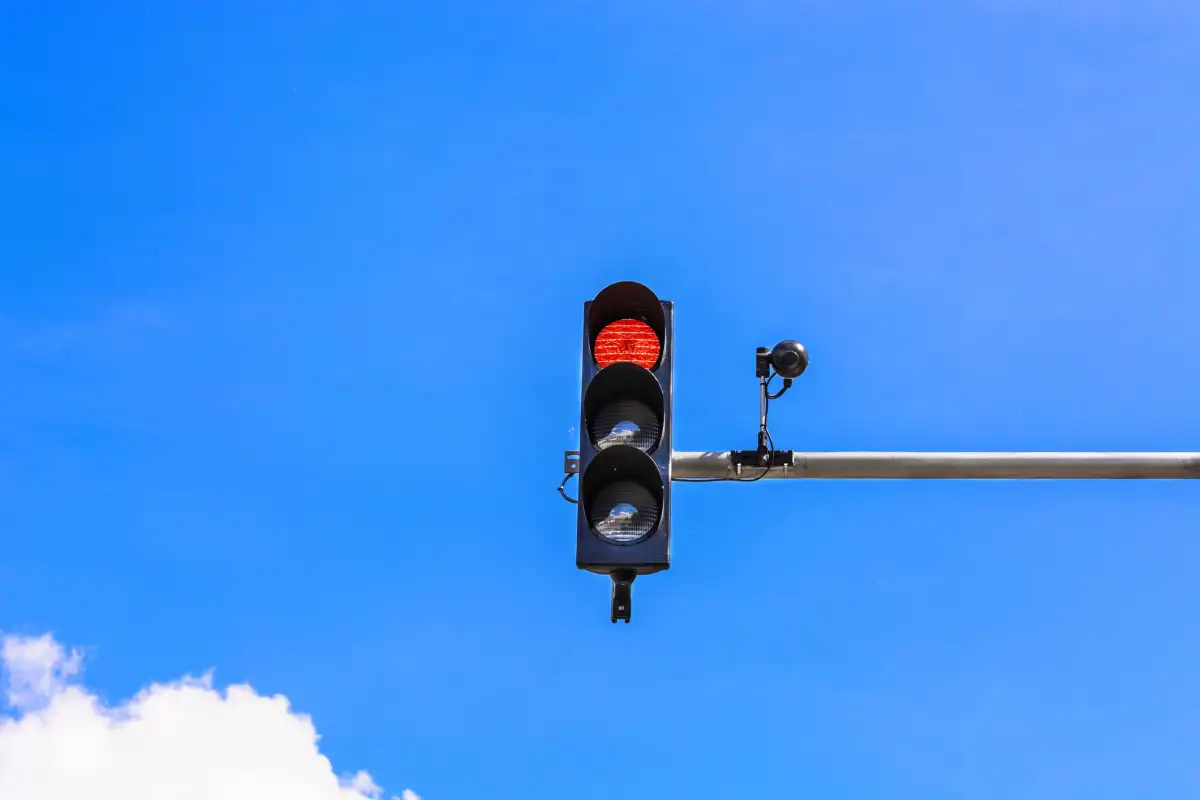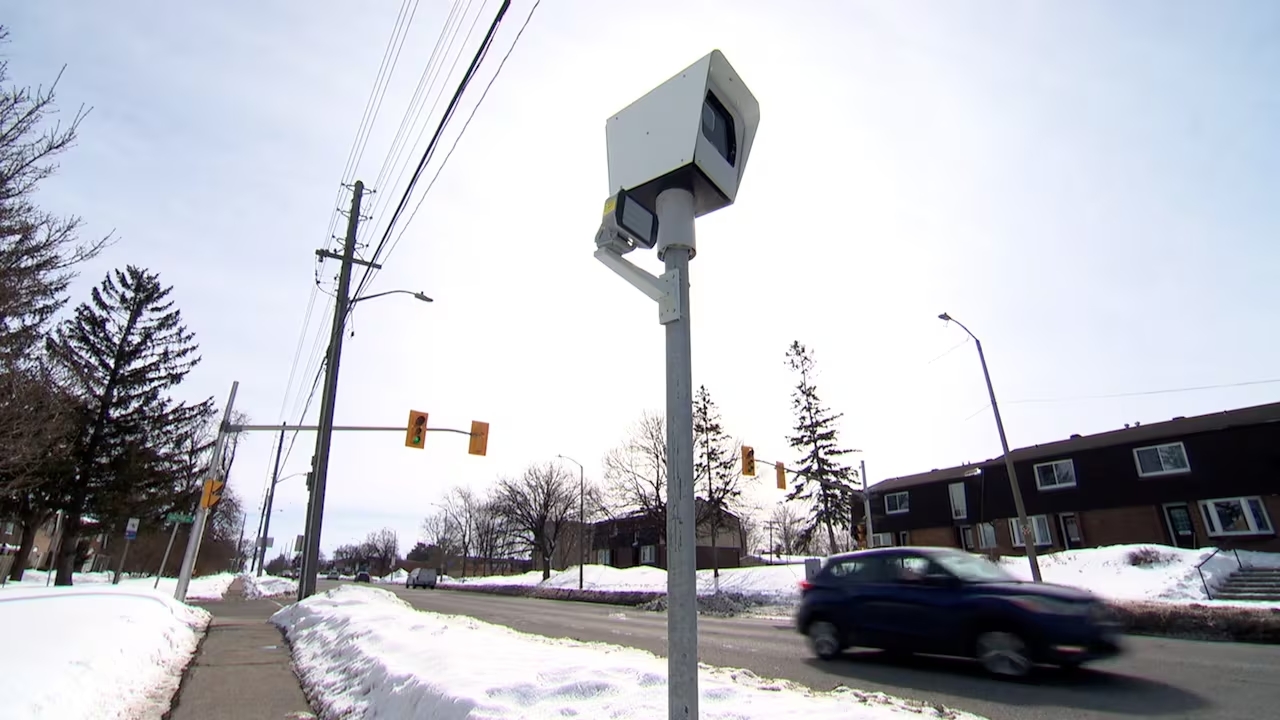This discussion aim to offer readers a deeper insight into the process by which our community-driven reporters gather information for your local news updates.
The speed camera on Niagara Stone Road and its operation have sparked much discussion among Niagara-on-the-Lake residents since the camera was activated earlier this year.
Questions circulating include whether drivers can be caught speeding in both directions, the speed threshold for issuing tickets, and the destination of the ticket revenue.
Since the program began on January 7, frequent users of the road near Crossroads School might be curious if they’ll receive speeding tickets, how many, and the potential cost.
Scott Fraser, the Niagara Region’s associate director of transportation, provided some answers to The Local. However, some details he could not disclose, either due to lack of information or because it’s not for public release.
Despite warning signs on both sides within the community safety zone in Virgil, Fraser clarified that the camera only monitors vehicles traveling south.
However, Fraser did not reveal the speed threshold at which tickets are issued, as this is determined by the province and remains confidential.
“It’s fair to say it’s a modest threshold,” he remarked, cautioning against the misconception that speeding within that limit is acceptable.
He reiterated that the speed limit 40 km/h from 7 a.m. to 5 p.m. on school days, and 50 km/h at other times must always be adhered to.
According to the Ontario provincial offences website, fines for speeding in a community safety zone range from $5 per kilometer for speeds between 1 and 19 km/h over the limit, with fines escalating based on how much the speed limit is exceeded.
Additional costs, such as a victim surcharge and a $5 court fee, also apply.
Some drivers may view these tickets as a “money grab” for the region, but Fraser explained that the revenue is first used to cover the costs of running the program, with any remaining funds split evenly between the region and the 12 Niagara municipalities.
Also Read: Are Automakers Secretly Making Cars Less Durable to Boost Profits?
The allocation is not based on the number of tickets issued but on property value assessments.
Fraser emphasized, “And all revenue from the program received by the region and municipalities is required to be spent on road safety initiatives.”
The automated speed enforcement program is part of the region’s Vision Zero initiative aimed at eliminating fatal or serious incidents and reducing overall collisions.
This program also includes a red light initiative operating in other parts of the region, although it has not yet reached Niagara-on-the-Lake.
While the cameras in community safety zones are rotated every 90 days across Niagara municipalities, red light cameras remain stationary.
Niagara currently has four speed cameras rotating through the region, with their placements primarily in front of schools or near school access roads.

Fraser noted that, on its next rotation, the camera on Niagara Stone Road will move to York Road in front of St. Davids Public School, monitoring traffic from Queenston Road to Concession 3.
The financial structure of the program involves the camera vendor, Verra Mobility, an Arizona-based transportation technology company, receiving daily rental fees for the cameras, along with compensation for installation, operation, and maintenance.
The vendor does not receive any portion of the ticket revenue.Additional costs, such as provincial offence court fees and the review of images to determine violations, are also covered by ticket revenue, according to Fraser.
Captured images are sent to a joint processing center in Toronto, which handles all automated speed enforcement programs in Ontario, where it is decided if the violation is valid.
Fraser explained that municipalities planning to implement the program collaborated on a request for proposals via a shared procurement process, pooling resources to acquire the system.
“We partner with the City of Toronto and other municipalities as part of that contract, and we all make a contribution to the joint processing centre to have the City of Toronto process the images on our behalf.”
At this stage, it is still too early for the region to estimate how much revenue will be generated, as the program is still in its initial stages.
“We initiated the automated speed enforcement program rotation in September and are still in the process of gathering that early data,” Fraser noted.
“We will present preliminary assessments to the region’s public works committee early in Q2 of this year, which will include insights on how the program is running, the safety benefits we’ve observed, and the number of violations recorded.”
He added that data from the cameras, the joint processing center, and independent safety assessments will be used to evaluate the effectiveness of the program.
“We’re conducting before, during, and after assessments of speed and road safety improvements as we implement the cameras,” Fraser continued.
“This evaluation is happening not only at the camera sites but also on parallel routes, ensuring that the benefits can be directly attributed to the presence of the cameras.”
Also Read: Top Glass Cleaners for Streak-free Windows For Your Home and Car
Before launching the program, municipalities studied statistics from areas where it had already been implemented. As a result of this “rigorous, detailed analysis based on the best research and large-scale studies,” the decision was made to roll it out across Niagara.
The region had been exploring photo radar as a tool to enhance road safety for several years, particularly in light of changes to provincial legislation allowing its use.
A September 2022 report on the program’s potential revealed that all schools with entrances on regional roads were assessed. It was found that vehicles in school zones were traveling approximately 14 km/h above the posted speed limit.
Collision data from Niagara school zones showed an average of 5.6 accidents per location each year.
While some criticism of the speed cameras has been voiced, Fraser mentioned hearing positive feedback as well. “I hear a lot of support, and a number of requests for additional cameras. It’s not just push-back.”
The success of the speed cameras will ultimately be measured by their demonstrated safety benefits and, ideally, a lasting change in driver behavior.
“We’ll know the program is successful when we have no violations and no revenue from tickets, because people are obeying the speed limit on our roads,” Fraser concluded.

